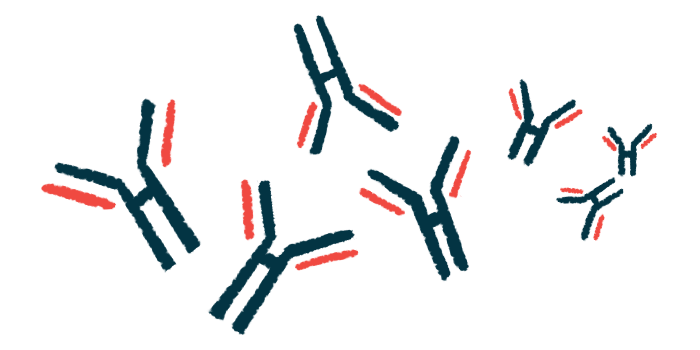IOPD patients with anti-ERT antibodies show distinct immune profile
A type 2 immune profile is used to generate inflammation to fight infection

Infantile-onset Pompe disease (IOPD) patients who develop antibodies against enzyme replacement therapy (ERT) exhibit a distinct immune profile from those who don’t, according to recent research.
Patients who developed these so-called high and sustained antibody titers, or HSAT, were skewed toward a type 2 immune profile, which the body usually uses to generate inflammation to fight off infectious invaders. Overactive type 2 responses are implicated in a range of inflammatory conditions.
“The immune profiles revealed in this study not only identify potential biomarkers of patients that developed HSAT, but also provide insights into the pathophysiology [biological mechanisms] of HSAT that will ultimately lead to improved immunotherapy strategies,” the researchers wrote in “Immunophenotype associated with high sustained antibody titers against enzyme replacement therapy in infantile-onset Pompe disease,” which was published in Frontiers in Immunology.
Pompe disease patients lack the acid alpha-glucosidase (GAA) enzyme for breaking down the large sugar molecule glycogen. In IOPD, there is minimal to no GAA enzyme activity. Early and rapid glycogen accumulation in tissues results in heart disease, lack of muscle tone, and respiratory failure very early in life.
ERT is intended to provide patients with the GAA enzyme they lack. Its use is associated with substantial clinical improvements and a prolonged lifespan with IOPD. Responses to treatment can vary based on several factors, however, and some patients will develop HSAT with ERT treatment, compromising its effectiveness. This is especially common with IOPD patients who completely lack their own GAA, as their immune systems aren’t trained to recognize and tolerate the protein. Patients who can’t make any GAA enzyme are called cross-reactive immunologic material (CRIM)-negative, whereas those who can make some are CRIM-positive.
Developing an anti-ERT immune profile
An immunotherapy regimen is often initiated in CRIM-negative patients to avoid the effects of HSAT. Still, CRIM status alone can’t predict whether HSAT will develop. Some CRIM-positive patients will also develop it and have a poor clinical response.
Recognizing the need to better predict at-risk patients, researchers at Duke University sought to identify whether there is a distinct immune profile associated with HSAT and conducted a detailed immune profile of blood samples from 40 IOPD patients who’d received ERT to see if HSAT were associated with particular immune characteristics.
Thirty patients had low antibody levels (titers). Of them, 10 were considered high risk and had received immunotherapy to prevent an ERT reaction, whereas 20 had not. The remaining 10 people developed and maintained high antibody titers regardless of immunotherapy.
Immune analyses of blood samples indicated a distinct immune profile in HSAT patients relative to those with low antibody titers.
For example, those with HSAT showed an increase in circulating T-helper 2 (Th2) cells, which have been implicated in immune responses against ERT in preclinical research, the researchers noted.
While overall levels of immune signaling molecules called cytokines mostly didn’t differ by antibody status, levels of Th2-associated cytokines and other inflammatory molecules positively correlated with the frequency of Th2 cells in the HSAT group.
B-cells, immune cells that produce antibodies, were increased in HSAT patients. Particularly, HSAT correlated with higher levels of mature, antibody-producing B-cell subsets.
Moreover, a reduction in concentrations of the cytokine GM-CSF was observed in HSAT compared with those with low antibody titers, along with a significant increase in the CXCL11 molecule.
These and other observed immune differences were consistent with a shift toward a type 2 immune profile and chronic inflammation with HSAT, said the researchers, who developed an HSAT signature score that could accurately stratify patients according to their antibody status based on their blood immune profile.
“There are potential implications that may be drawn from the findings in this study, which may impact therapeutic strategies for mitigation of HSAT,” they wrote.
Medications that target the immune cells and cytokines altered in HSAT may help prevent antibody development in vulnerable patients. For example, lab-made preparations of GM-CSF are already being used in cancer care.
“If low GM-CSF is found to play a likely role in the pathogenesis of HSAT, these off-the-shelf medicines could therefore be further studied and, if successful, incorporated into clinical trials,” the researchers said.







